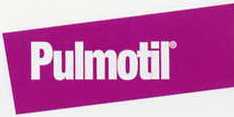NADIS Pig Disease Focus – June 2006 – Sunburn and Heatstroke
During a warm dry summer, the 2 separate conditions of sunburn and heatstroke tend to get linked together and whilst these are undoubtedly instances where the 2 conditions occur together they are distinctly different in their cause, development and consequences.
Heatstroke – known in medical terms as hyperthermia – occurs when the core body temperature rises and the normal control mechanism fails to reduce it. The pig is a relatively poor controller of its own body temperature, not sweating (other than from the snout) and if it is unable – due to environmental conditions – to wet its skin and thus allow latent heat of vaporisation to cool it (the exact process that occurs with sweating in man) it cannot lose heat from the skin. Even if able to wet the skin (wallowing, playing with water nipples etc) if humidity is very high, the water will not evaporate and thus there will be no cooling (A similar situation occurs in a sauna in man). In practice, in temperate climates, humidity is rarely such a problem.
In the absence of wallowing or wetting, the only methods available to the pig to avoid over-heating are moving to cooler areas – such as where there are draughts or shade – and panting.
Whilst the ultimate consequences of heatstroke are disastrous i.e. death, early signs would include increased respiratory rate, attempts to lie on their sides, away from other pigs, lying in dunging passageways and excessive playing with water. An increased respiratory rate leads to more water loss (i.e. the cooling process) and thus dehydration may become an issue.
Measures that are necessary to avoid heatstroke will depend upon the age of the animal at risk and the accommodation available. In general, however, the following points are valid:-
1) Provide adequate insulation in buildings.
2) Fit and test alarm systems that warn of rising temperatures.
3) Provide drip lines, mist sprayers, wallow areas to aid cooling.
4) Provide readily available high flow rates of water (minimum 0.5 litres per min rising to 1.5-2 litres for lactating sows).
5) Do not overstock.
6) In extreme weather, wet passageways in buildings or even spray building roofs with water.
With its high bodyweight to surface area ratio, the adult is particularly vulnerable and other features of overheating in the longer term include:-
– Reduced lactation feed intake and hence reduced milk supply.
– Embryo death leading to returns to service or very small litters.
– Abortions.
– Reduce boar sperm volume and quality and hence lower ferility/litter size.
Sunburn – that can lead to heat stroke in itself is a distinctly separate condition of obvious cause. It is not restricted to outdoor pig production. It tends to occur more commonly in early summer (May/June) as a result of the first exposure to strong sunlight since the winter and, in a mild form, reddening of the skin is all that is seen but, in severe cases, blistering can occur and when the back is severely affected the pig will adopt a characteristic pose with the back distinctly dipped and walking on the front knees.
Apart from the obvious pain and discomfort that sunburn produces in some cases, it can lead to pregnancy loss (returns to service or abortion) or a failure to be served in an unsupervised regime.
It is important to remember that outdoors, water wallows will not protect against sunburn (children get sunburnt playing in the sea or in swimming pools). To be effective, the wallow must provide a thick coating of mud over the body. Shading is an alternative.
Copyright © NADIS 2006 www.nadis.org.uk
While every effort is made to ensure that the content of this forecast is accurate at the time of publication, NADIS cannot accept responsibility for errors or omissions.
All information is general and will need to be adapted in the light of individual farm circumstances in consultation with your veterinary surgeon
| FURTHER INFORMATION | SPONSORS’ LINK |
| • Supporting British Livestock click here |
|
| FURTHER INFORMATION | SPONSORS’ LINK |
| • Supporting the british pig industry |
|
| FURTHER INFORMATION | SPONSORS’ LINK |
• To find out more |
|
| FURTHER INFORMATION | SPONSORS’ LINK |
• To find out more about |
|




